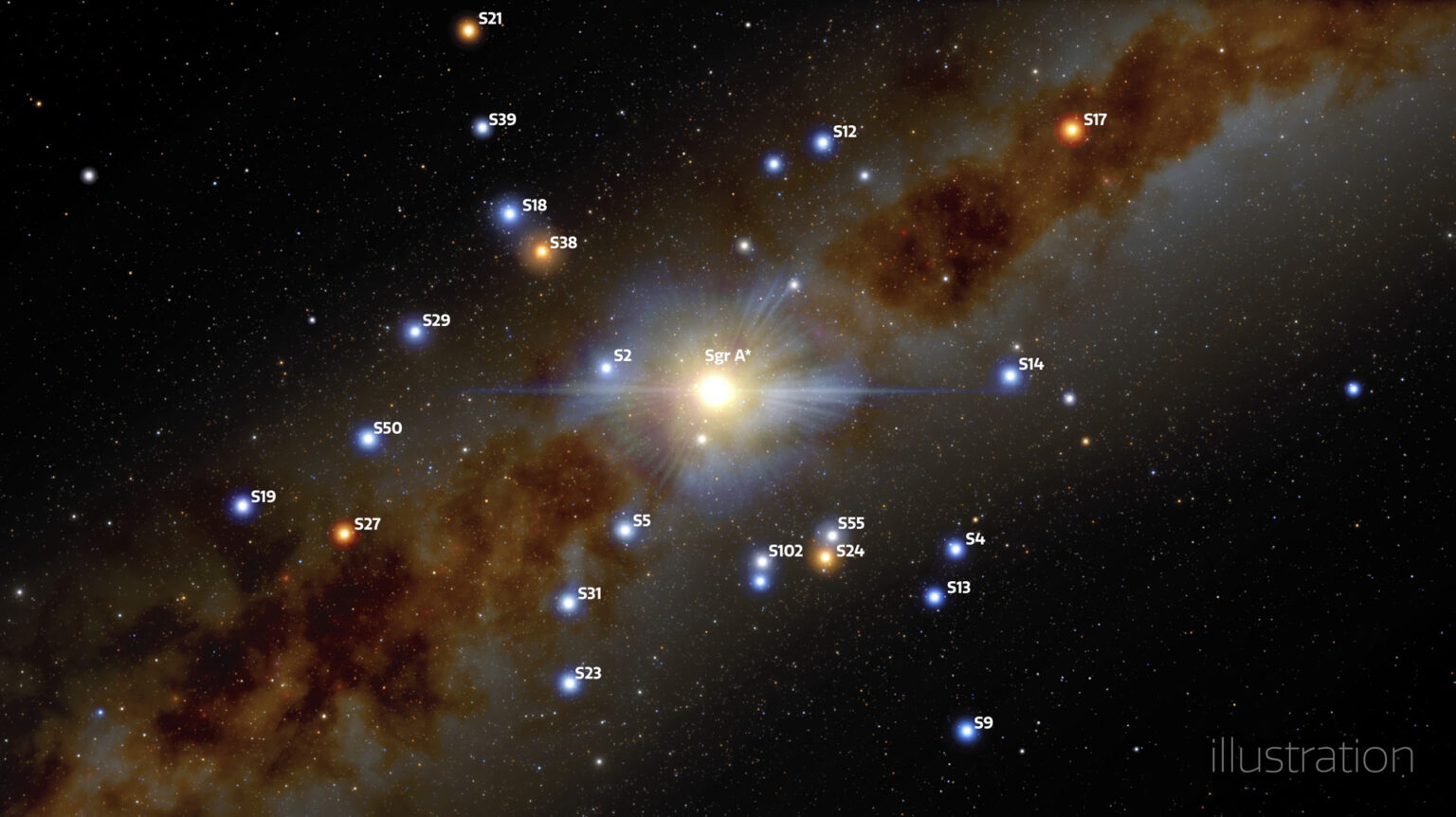Scientists have studied a group of young stars orbiting directly next to the supermassive black hole Sagittarius A*, located at the center of our Galaxy. According to their reports, it all happens at a great distance and resembles a swarm of bees.

Young stars at the center of the Milky Way
Observational astronomy shows that recently discovered young stellar objects (YSOs) in the vicinity of the supermassive black hole Sagittarius A* at the center of our galaxy are not behaving as expected. They are in orbits similar to already known young stars and are arranged in a specific order around the supermassive black hole.
Research shows that Sagittarius A* causes stellar objects to take on certain shapes. The study is titled “Candidate young stellar objects in the S-cluster: Kinematic analysis of a subpopulation of the low-mass G objects close to Sgr A*” and has been published in the journal Astronomy & Astrophysics.
About 30 years ago, high-speed objects known as S stars were discovered in the vicinity of the supermassive black hole Sagittarius A* at the center of the Milky Way. They orbit the supermassive black hole at several thousand kilometers per hour in a few years.
These luminaries are surprisingly young, and their presence is surprising because, according to popular theories, we would expect only old and dim stars in the vicinity of a supermassive black hole.
Exploring the center of our galaxy
The technological advances that have occurred in recent decades, and long periods of observing the center of the galaxy with modern telescopes, now raise new questions. For example, in 2012, an object was discovered that researchers believed to be a cloud of gas that had been “sucked in” by a supermassive black hole.
Although this theory hasn’t been confirmed, it wasn’t clear for a long time what this object could be. In recent years, there has been growing evidence that these may be young stellar objects (YSOs) surrounded by a dust cloud.
In addition to S stars, researchers are now investigating a dozen objects in the immediate vicinity of the supermassive black hole that also have very similar properties. They found that these objects were even much younger than the already known high-speed stars.
“Interestingly, these YSOs exhibit the same behavior as S stars. This means that the YSOs circumnavigate the supermassive black hole with speeds of several thousand kilometers per hour in a few years,” explained Dr. Florian Peißker from the Institute of Astrophysics at the University of Cologne and an author of the study.
Swarm of bees
This group of high-speed objects, consisting of YSOs and S stars, at first glance resembles a chaotic swarm of bees. However, just as a swarm of bees has a definite structure and regular formations, both YSOs and S-stars have a definite structure.
Thus, the researchers were able to demonstrate that YSOs as well as S-stars were arranged in three-dimensional space in a certain way, in an organized manner. A swarm of bees knows how to line up.
“This means that there are specific preferred star constellations. The distribution of both star variations resembles a disk, which gives the impression that the supermassive black hole forces the stars to assume an organized orbit,” said Peißker.
According to phys.org


